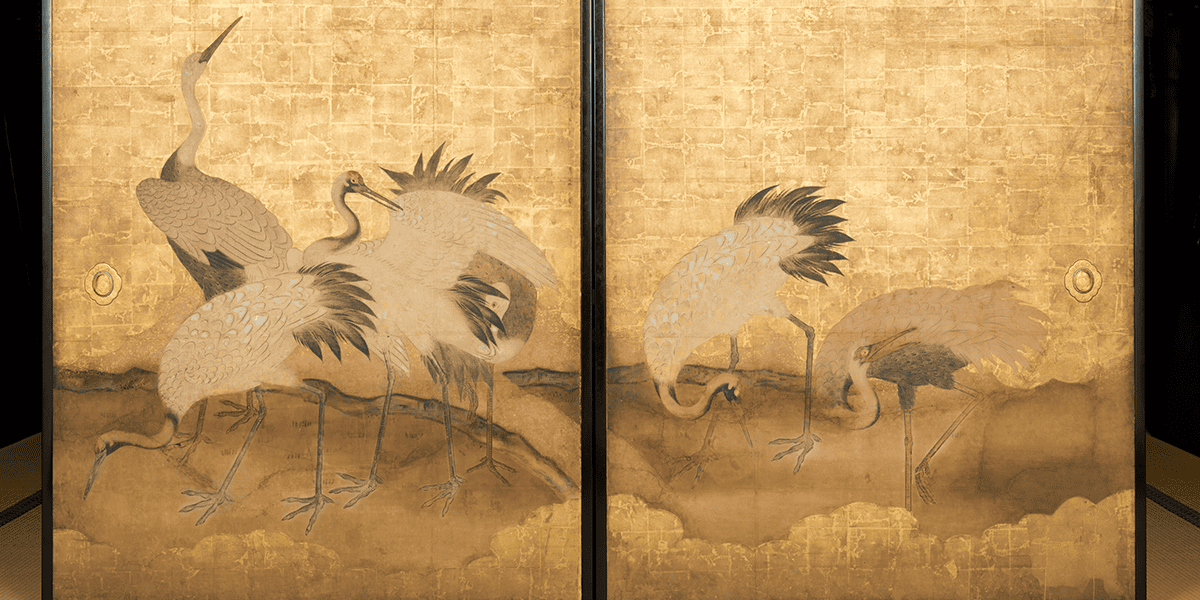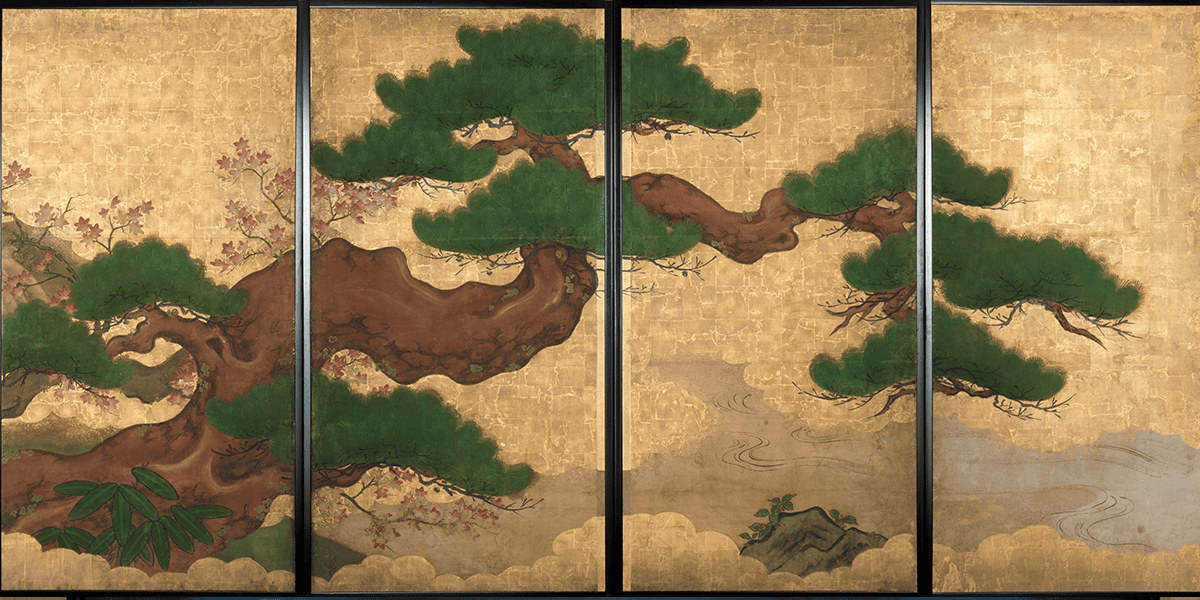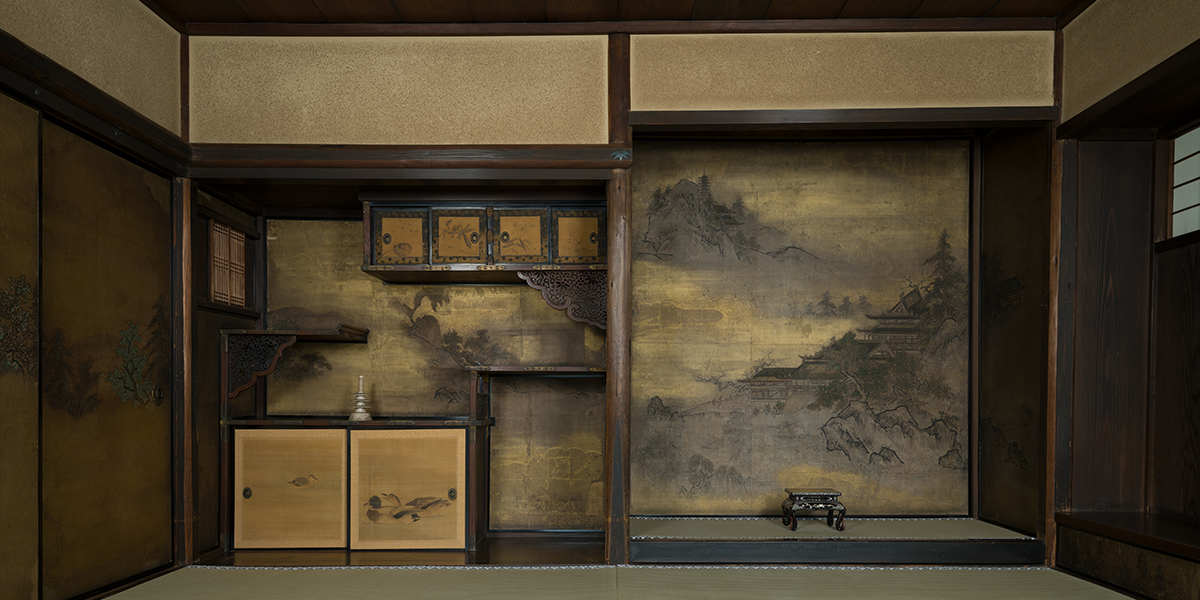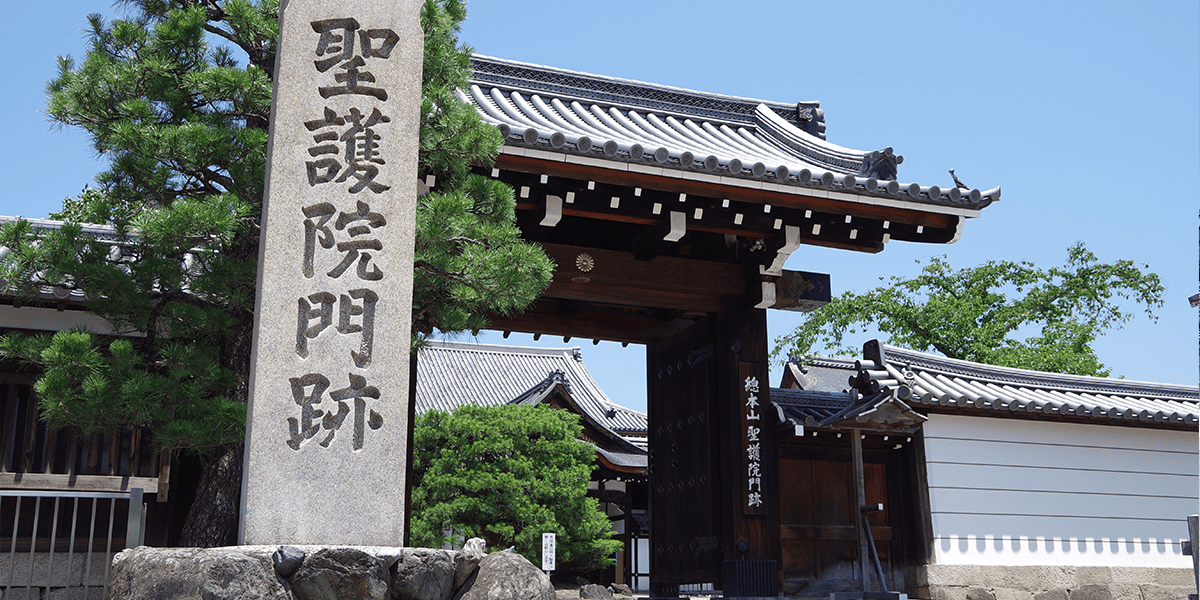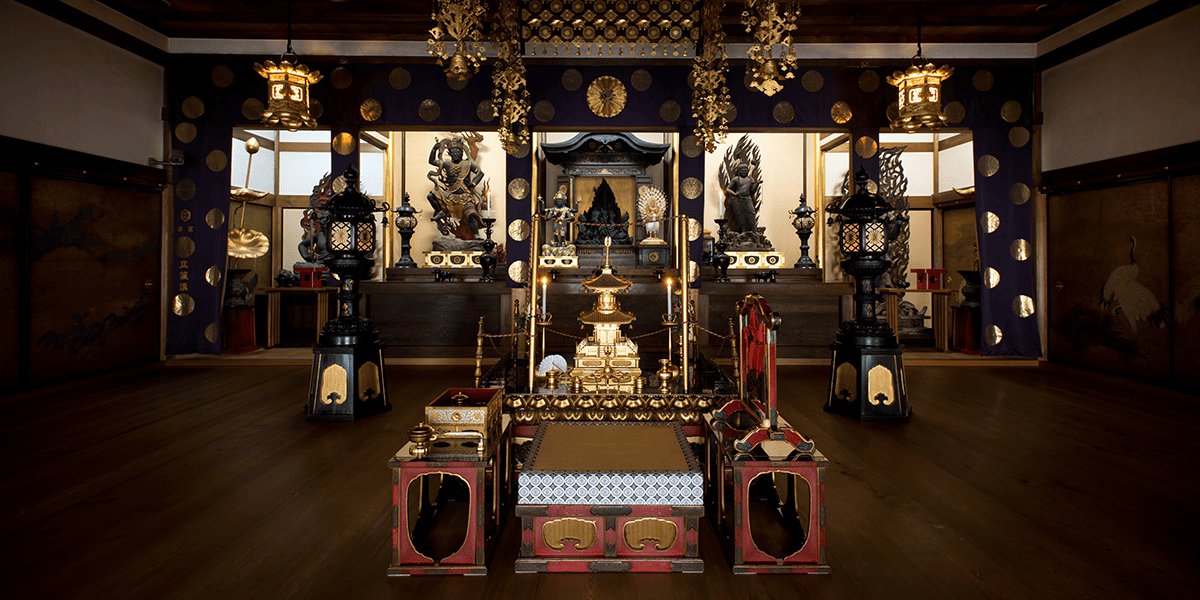Shogo-in Monzeki is a prestigious temple with deep ties to the Imperial Family and Shugendo tradition.
Highlights include the Shinden, once a temporary imperial residence;
the study hall and sacred statues designated as Important Cultural Properties;
and the magnificent "shoheki-ga" paintings adorning sliding doors and walls.
Experience deep tranquility in a space filled with history and solemn grandeur.
Shogo-in Monzeki Temple
Highlights
HIGHLIGHTS
"Shoheki-ga" Sumptuous Sliding Door Paintings
The sumptuous shoheki-ga (paintings on sliding doors and walls, created by applying gold leaf and rich colors) that adorn the interior of Shogo-in Monzeki Temple are one of its most celebrated artistic highlights. The Shinden and Shoin halls together preserve around 200 of these magnificent paintings, which are in exceptional condition. It is a rare opportunity to view so many of these works together. Created by renowned artists, they reflect the highest level of artistry of the time and the prestige of the Shinden as a temporary imperial residence. Each room offers a unique and grand visual world to experience.
Statues of Sacred Guardians at Shogo-in Monzeki
During the anti-Buddhist movement of the Meiji era, numerous Buddhist statues, including a central image of Fudo Myoo (Acala), were transferred to Shogo-in Monzeki from affiliated temples that were abolished at the time. Among them, the statue of Fudo Myoo enshrined in the main hall has been designated as an Important Cultural Property. Created in the late Heian period (11th–12th c.), this statue has miraculously survived multiple fires that have struck Shogo-in Monzeki over the centuries. Revered as the principal object of worship, it has long been preserved with great care and stands as a powerful symbol of the temple’s enduring faith.
A Refined and Elegant Study Hall
This graceful study hall was relocated from the Kyoto Imperial Palace in 1676 and is now designated as an Important Cultural Property of Japan. It was originally built for Takako Kushige, a beloved court lady of Emperor Go-Mizunoo.
The architecture reflects the emperor’s deep affection and attention to detail. Notable features include the "mairado" sliding doors with beautifully crafted vertical slats, the delicate and elegant roof design, and ornamental nail covers shaped like folded love letters (orebumi), symbolizing romantic devotion. Every detail embodies the refined court culture of the time and the tender emotions it carried.
Main Gate
This gate, commonly known as the Sanmon (main gate), serves as the entrance to Shogo-in Monzeki Temple. Entering through this gate leads you into the temple grounds, a dignified site with deep ties to the Imperial Family and the Shugendo tradition. Within its quiet presence, you can feel the weight of a long history and the temple’s solemn dignity. From here, a realm of serene silence beyond the ordinary unfolds. After three hundred years, it underwent major restoration in 2000.
Shinden Ceremonial Hall
The Shinden is one of the most significant buildings at Shogo-in Monzeki Temple, symbolizing its deep connection to the Imperial Family, as it once served as the Emperor’s most prestigious temporary residence during his stays. The architectural style, strongly influenced by shoin-zukuri (a traditional style of Japanese residential architecture), reflects the culture and prestige of the Imperial Family during that era. Standing in the Shinden, you can reflect on an important chapter of Japanese history and feel the atmosphere the Emperor likely experienced here.
